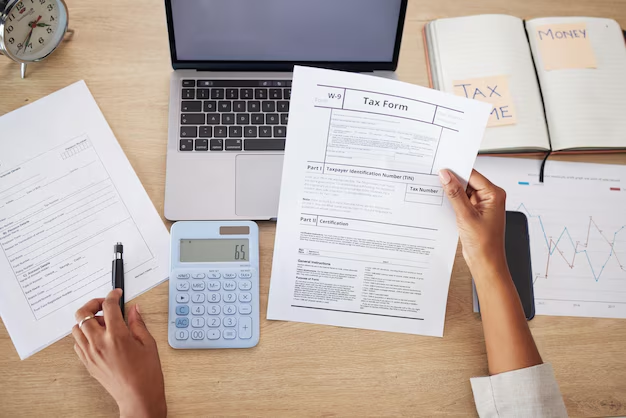Where Can You Find a 1040 Form? Your Complete Guide to Accessing IRS Forms
Are you ready to tackle your taxes but find yourself wondering, "Where can I get a 1040 Form?" Whether you're seasoned in tax filings or a first-timer, knowing how to locate and get your hands on the IRS Form 1040 is crucial. After all, it's the starting point for filing your federal income taxes. This guide will walk you through the various ways to obtain a 1040 Form, covering both traditional and digital avenues, while also providing some handy tax tips along the way.
Understanding the 1040 Form
Before diving into where you can get a 1040 Form, it's essential to understand what it is and why it's crucial. The 1040 Form is used by U.S. taxpayers to file an annual tax return. Its primary purpose is to declare income and calculate how much is owed to or will be refunded by the IRS. The 1040 Form comes in several variations, including the standard Form 1040, the 1040-SR for seniors, and the 1040-NR for non-resident aliens.
Variations of the 1040 Form
- 1040: The most common form for reporting individual income.
- 1040-SR: Tailored for seniors, it features larger print and considers retirement income specifics.
- 1040-NR: For non-resident aliens reporting income from U.S. sources.
Understanding which version you need is the first step towards filing correctly.
Where to Get a 1040 Form
Finding a 1040 Form is easy once you know where to look. Here are some accessible options:
1. Download from the IRS Website
The most straightforward way to get a 1040 Form is through the IRS official website. Here’s why visiting this site is beneficial:
- Availability: Downloadable forms are updated annually, ensuring you get the most recent version.
- Instructions: Accompanied by detailed guidelines for filling out the form.
- Multiple Formats: Forms are available in both PDF and fillable versions for electronic submission.
How to Download:
- Visit the IRS website.
- Navigate to the "Forms & Instructions" section.
- Search for the 1040 or specific variations (1040-SR, 1040-NR).
- Download the form in your preferred format.
2. Physical Copies at Local Libraries or Post Offices
If you prefer a physical copy, local libraries and some post offices often stock these forms during tax season. This method is particularly useful if:
- Internet Access: You have limited or no access to a printer.
- Assistance: Staff may offer guidance on additional resources.
Contact your local library or post office to confirm availability.
3. Request by Mail
Another option is to request a mailed copy directly from the IRS. While not as immediate as other methods, it’s a viable solution if:
- Time: You’re planning ahead and have time before the filing deadline.
- Preference: You prefer official, printed documents.
To request a form by mail:
- Visit the IRS website or call the IRS order line.
- Select the needed forms and provide your mailing address.
- Expect the forms to arrive within 7-15 business days.
4. Tax Preparation Software
Many taxpayers opt for tax preparation software to simplify filing. These platforms typically offer the latest 1040 forms integrated with e-filing capabilities. Advantages include:
- Ease of Use: Automatic calculations reduce errors.
- Guidance: Step-by-step instructions tailor the filing process.
- Electronic Filing: Direct submission to the IRS.
Popular tax preparation software options include well-known brands but remember to review features to ensure they meet your needs.
Useful Tips for Filling Out Your 1040 Form
Once you've obtained your 1040 Form, filling it out correctly is crucial. Here are a few tips:
- Gather Documents: Collect all necessary documents ahead of time, such as W-2s, 1099s, and records of deductions or credits.
- Double-Check Entries: Avoid errors by reviewing all entries carefully, particularly personal and financial information.
- Utilize Tools: Use online tools or calculators to verify tax amounts and liabilities.
- Verify Filing Status: Make sure you're using the correct filing status, as this impacts tax brackets and potential credits.
Summary of Where to Get Your 1040 Form 📄
To make it easier, here’s a quick reference guide to accessing your 1040 Form:
- 🔗 Online Download: Fast and up-to-date at the IRS website.
- 📚 Physical Copies: Available at many libraries and post offices.
- 📬 Mail Request: Ideal for those who plan ahead.
- 💻 Tax Software: Convenient and integrated filing solutions.
Armed with this knowledge, you should feel confident in acquiring and completing your 1040 Form. By taking these steps, you’re well on your way to a smoother tax filing experience.
Beyond the 1040: Additional Tax Resources
While obtaining and filling out a 1040 Form is a fundamental part of tax preparation, there are additional resources to enrich your understanding and ease your filing experience:
IRS Publications
The IRS offers a comprehensive selection of publications providing insights into various tax topics. These publications are available for download via the IRS website and can be immensely useful for:
- Clarifying Deductions: Understanding allowable deductions and credits.
- Planning Ahead: Gaining long-term tax planning perspectives to optimize obligations.
Taxpayer Assistance Programs
Consider utilizing taxpayer assistance programs for personalized help. These include:
- Volunteer Income Tax Assistance (VITA): Free tax preparation for eligible individuals.
- Tax Counseling for the Elderly (TCE): Focused on tax issues specific to seniors.
Professional Tax Advisors
For those seeking detailed guidance, consulting with a tax professional can prove invaluable, especially for complex tax situations that go beyond typical filings. Benefits involve:
- Expertise: Detailed analysis by experienced professionals.
- Personalized Advice: Tailored recommendations based on individual circumstances.
Through comprehensive understanding and resourceful planning, you can confidently navigate the annual tax season. Remember, preparation is key, and utilizing the tools and resources available can help transform your tax experience from daunting to manageable. By leveraging the various methods to acquire your 1040 Form and tapping into additional resources, you’re ensuring that your tax filing is both accurate and efficient.
